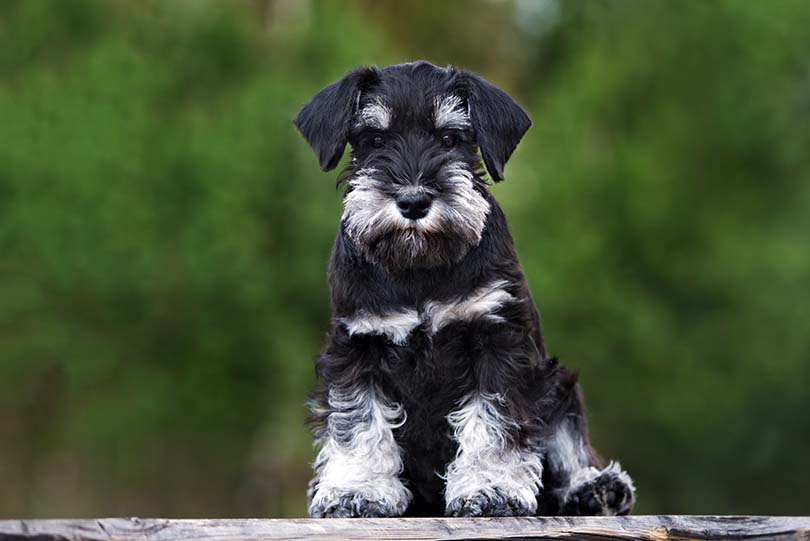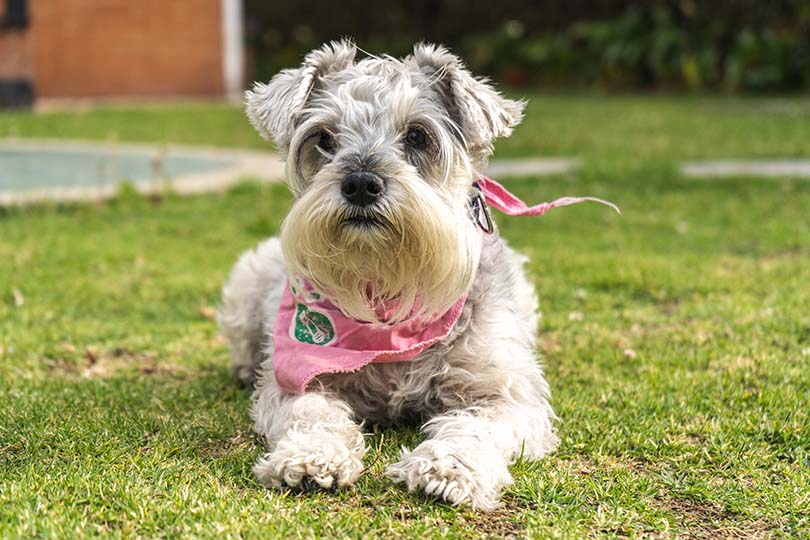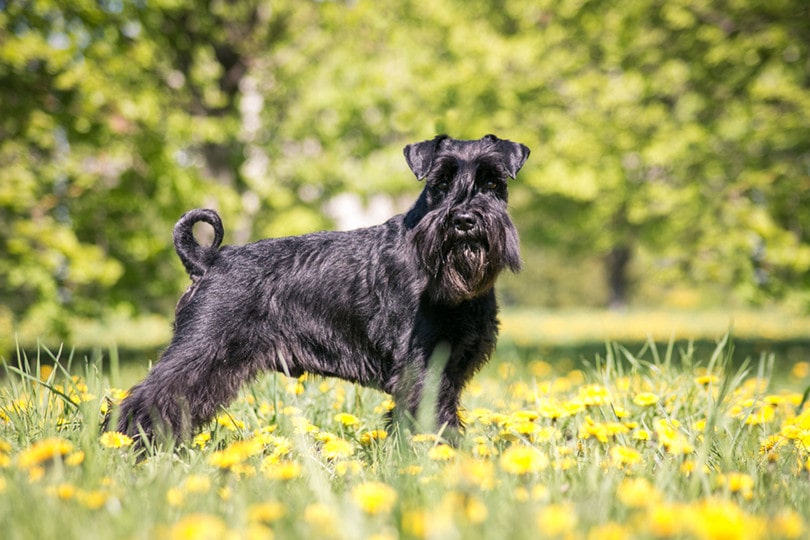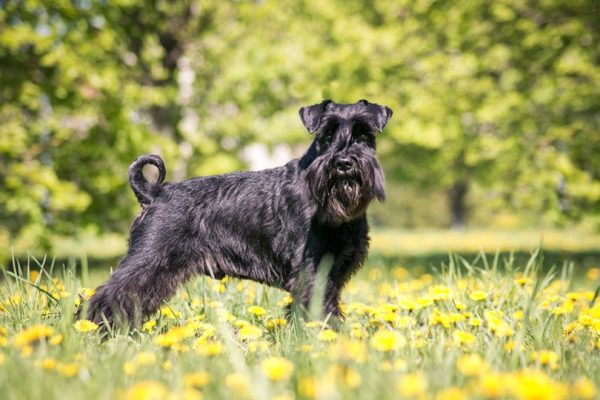Originally, Schnauzers were bred to be all-around farm dogs. They were bred to chase away rodents and rabbits, which were commonly a threat to stored grains and the fields. They worked without input from a human and instead, they were sent to wander in fields and chase away pests as they came.
In some cases, they were also used to guard farms against people and larger animals.
However, different-sized Schnauzers were bred for different purposes. The miniature Schnauzer was more likely to be used as a ratter. The Standard schnauzer was used for just about everything—even Red Cross and police work. The giant Schnauzer was bred to guard livestock and help drive them to market. Their larger size made them less able to chase away rats and rabbits, but they were more effective at guarding.

The Emergence of the Schnauzer

The Standard Schnauzer was the original of the three Schnauzer sizes. They date back to the Middle Ages, where dogs very similar to the modern breed were used to perform all sorts of household and farming tasks. Because they were all-around farming dogs, they had to perform a variety of services.
We don’t know exactly how these dogs came to be. It is likely that they were bred using a variety of other breeds, including the German Poodle and the German Pinscher. Different scholars have different suggestions. However, this canine was likely more useful in the winter due to its coat, which may be why it grew in popularity.
By the mid-19th century, this dog became more popular amongst German dog fanciers. They made many crosses with the breed, which eventually led to the creation of the three variants. It is also likely that other breeds have Schnauzer blood in them, as these black dogs were likely used in many breeding lines.
This breed was not given its name until the turn of the century when it was named after its prominent “mustache.” It was also standardized into a purebred dog and allowed to compete in dog shows, which were relatively new at the time. It took a little bit for the modern breed to emerge. However, our first evidence of this breed has them fairly similar to the one we know today.
Unlike some other breeds, this one has not changed very much in the modern era.
The Breed Becomes International

As the breed continued to flourish, they slowly found themselves spreading around the world. They were first imported into the United States around 1900. However, they were not imported in large numbers until WWI.
Still, the breed is not bred extensively in the United States and has not become very popular. Therefore, they are usually only bred by those that are extremely passionate about the breed. Often, the puppies are not bred explicitly for pet purposes but for the furthering of the breed.
In 1925, the Schnauzer Club of America was formed. However, it quickly split into two groups in 1933—one for Standard Schnauzers and another for Miniature Schnauzers. The standards set for both breeds have varied throughout the years.
Now, there are about eight different regional Schnauzer clubs throughout the country. Most of these provide plenty of help to new owners. Many even keep records of breeders, making it far easier to find a dog to adopt.

Conclusion
The Schnauzer is an old dog. However, their history does not feature the twists and turns that dog breeds usually take. For the most part, these dogs have been used as versatile working dogs throughout the centuries—from small medieval farms to WWI Red Cross stations.
The Standard Schnauzer was the first breed, but then it was quickly separated into three different breeds. The actual name and standard for the breed came pretty late in its history. However, older dogs looked and acted very similar to the new breed. Surprisingly enough, this breed has not changed very much over the years.
Related Read:
- What Were Labs Bred For? History of the Labrador
- What Were Boston Terriers Bred For? History of the Boston Terrier
Featured Image Credit: Eve Photography, Shutterstock











